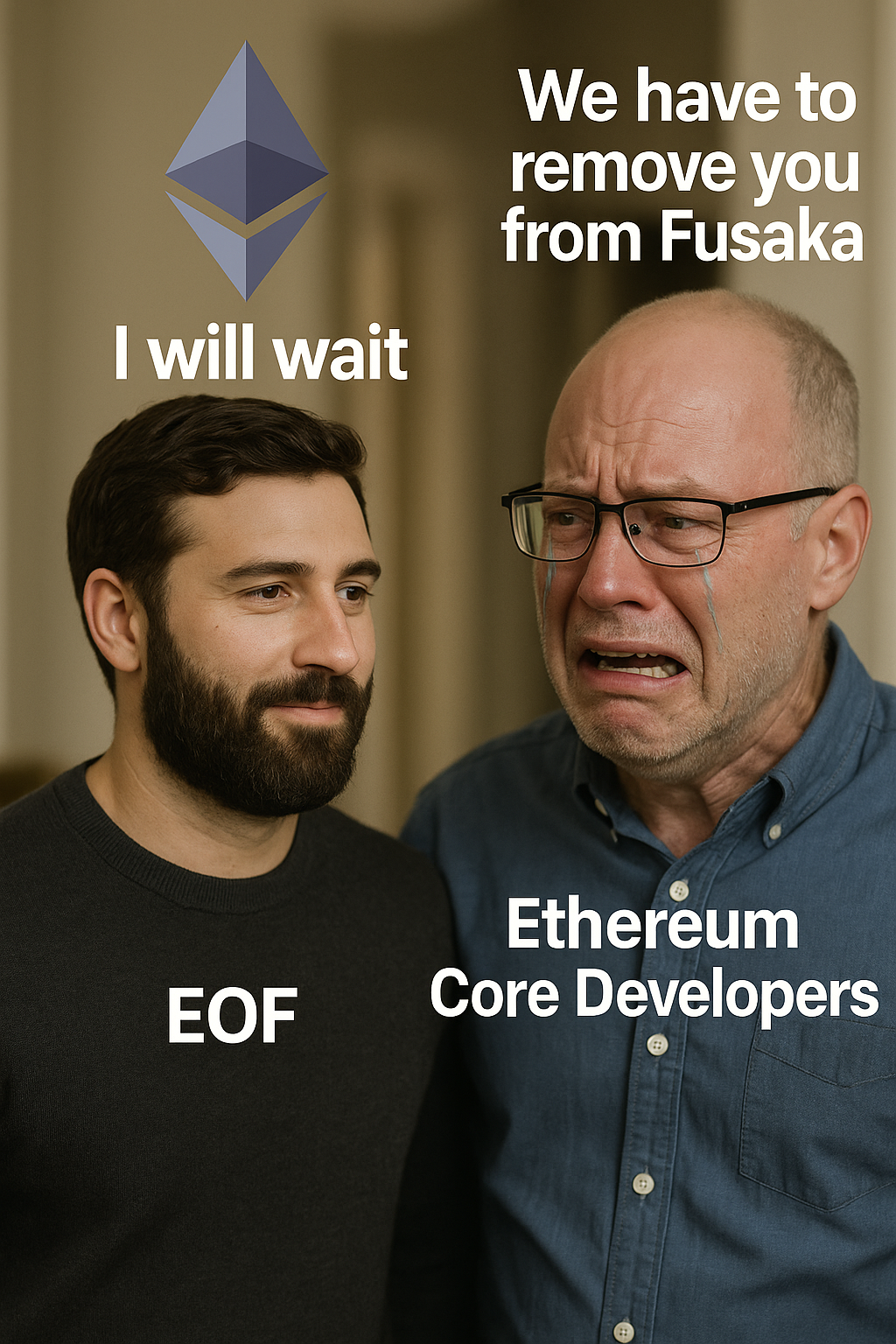On April 28, 2025, Ethereum core developers officially removed the EVM Object Format (EOF) from the upcoming Fusaka upgrade. The decision, confirmed during the latest All Core Devs call chaired by Tim Beiko, was driven by concerns about complexity, unclear timelines, and client coordination issues.
🔍 What Is EOF?
EOF, or EVM Object Format, is a proposed restructuring of Ethereum smart contract bytecode. It introduces a versioned container format, strict deploy-time validation, separated code/data sections, and eliminates dynamic jumps.
These features aim to enhance the security, analyzability, and upgrade flexibility of the Ethereum Virtual Machine (EVM). It represents a significant step toward modular and version-controlled smart contract infrastructure.
❌ Why Was It Removed?
Several factors contributed to the decision to drop EOF from Fusaka:
- Risk to timelines: Adding EOF could delay Fusaka’s planned rollout in Q3–Q4 2025.
- Technical uncertainty: Some client teams expressed unfamiliarity with core EOF mechanisms mid-development.
- Community pushback: Developers and node operators flagged the complexity and unclear short-term value.
- Process gaps: Unlike other Fusaka features, EOF lacked a full security and implementation review cycle.
In place of EOF, developers have prioritized PeerDAS, a critical feature for Ethereum’s scalability roadmap that has broader consensus and clearer timelines.
🧙 Community Response
Reactions have been mixed. On Ethereum Magicians, contributor @PascalCaversacc described EOF as “a labyrinth of unnecessary complexity.” Many agreed that such a foundational change requires more gradual exploration and phased deployment.
📢 Author's Take
Removing EOF is a strategic and mature decision. While technically sound, EOF modifies low-level EVM operations. Deploying it prematurely could risk network stability.
The best way forward may be to form a dedicated working group, gather broader implementation feedback, and propose phased integration in a future upgrade — potentially Glamsterdam.
This outcome reflects Ethereum’s greatest strength: an open, iterative governance model that puts safety and resilience first.

